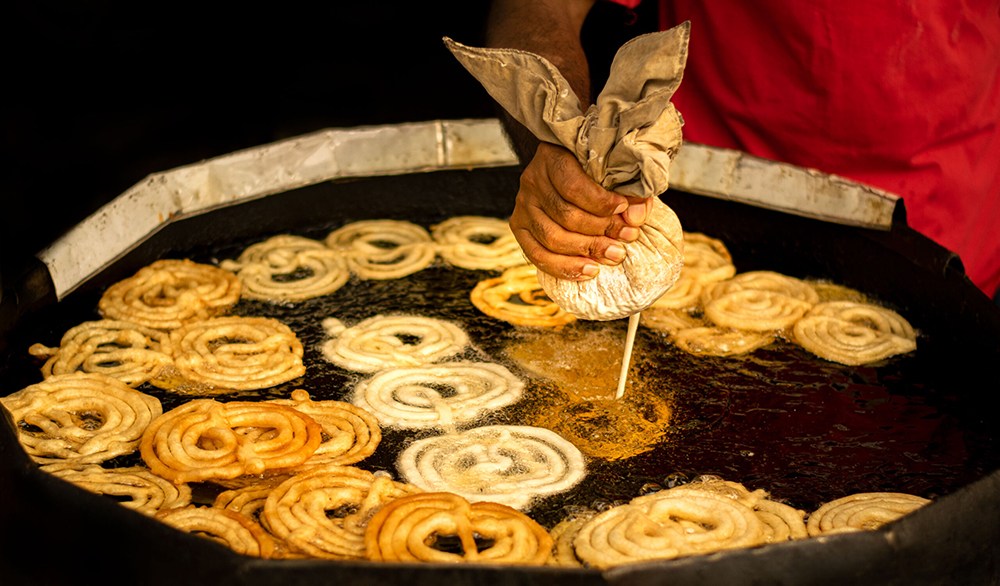Explore Traditional Jalebi: 3 Cultural Secrets
Do you want a crunchy and sweet dish? Then try Jalebi! It’s a famous Pakistani dessert. In this article we will talk about the origins of Jalebi, its cultural importance and provide you with an easy recipe to make your own. Let Jalebi work its magic on you as it takes you across Pakistan through taste buds. Stay connected with us through our blog “BEST CULTURAL FOOD”.
Introduction
Pakistan’s food culture is centered around Jalebi, a sweet that goes beyond being just a dessert. This swirly treat soaked in bright syrup does more than please the tongue. It represents joy, hospitality and nostalgia. The story of Jalebi is interlaced with the country’s past as it has made appearances at wedding banquets, Eid parties and even simple hangouts. Want a slice of Pakistani life? Read on about the wonder that is Jalebi – from where it all began to how you can make your own batch!

History of Jalebi
From its birthplace in the Middle East, this sweet delicacy came down to the Indian subcontinent during the reign of Persian Empire. It has become a major part of Desi cuisine and is now known as a much-loved dish. alebi began long ago with Zalabiya—a dessert cooked by Persian cooks. This syrup-drenched deep-fried dough won over many hearts and tongues too. As trade blossomed, Zalabiya found its way into Indian Subcontinent where it underwent a tasty change.

In India, Jalebi was transformed in order to suit local tastes and ingredients. Addition of aromatic flavors through saffron, rose water and cardamom made it different from its Persian ancestors. Eventually, it became customary for every Desi household to have jalebi during happy moments and celebrations. Jalebi today is a classic example of how cultural boundaries are broken down; it unites Desis across generations. Whether taken as street food or a homemade luxury meal, jalebi’ s crispy nature will remain irresistible to all food lovers worldwide for years to come . Thus, next time you take a bite at that golden swirl of jalebi just remember you are having history at your mouth; a delicious heritage passed through generations.
Cultural Significance
Desi culture associates Jalebi with more than a dessert. It is part of the cultural fabric. Jalebi, which symbolizes wealth, unity and happiness, has become a part of most events such as Diwali, Eid, weddings etc. It represents sweetness in relationships and life’s cycle as depicted in its circular shape. Making a jalebi is an art that is passed down from one generation to another but is given a special touch by each family. To watch expert hands twist batter around hot oil into intricate patterns looks not less than treating eyes or tongues as well. Finally when the aroma of jalebis fills the air making them magnetic to people.
It isn’t just about taste; it’s about memories also made. Each mouthful has a story behind it be it sharing jalebis with grandparents or snatching bites from cousins at least some will come out. But when jalebis are eaten together they become truly special. It remains forever classic in this evolving world where traditions have lost their place thus becoming the bridge between generations. This reminds us our roots and connections that keep us together. The next time you sink your teeth into warm syrupy jalebi remember that you’re not merely having dessert but rather indulging in Desi culture piece and forging memories which will last a lifetime.
Homemade Easy Recipe
Ingredients for Jalebi
- All-Purpose Flour (Maida) – 1 cup
- Yogurt – 1/2 cup
- Water – 1/2 cup (adjust as needed for batter consistency)
- Sugar – 1 cup
- Saffron Strands (Kesar) – a pinch (optional, for color and flavor)
- Cardamom Powder (Elaichi) – 1/4 teaspoon
- Baking Powder – 1/4 teaspoon
- Vegetable Oil – for deep frying

Instructions
Step 1: Make Batter
In a large bowl, mix 1 cup of refined flour, ½ cup yoghurt and ½ cup water. Mix it very well and make sure that there are no lumps.
Step 2: Ferment the Batter
Take a towel or plastic cover and cover it with the above mixture for fermentation. This process is important to get the right consistency of batter as well as flavor enhancer.
Step 3: Prepare Sugar Syrup
Mix sugar and water in a pot. Bring it to boil on medium heat and stir well When the sugar dissolves completely in the syrup slightly thickened add few strands saffron (optional) and a quarter teaspoon cardamom powder. Stir well put off flame but keep syrup warm.
Step 4: Prepare Jalebis
Heat oil in a deep frying pan over medium flame. The jalebis should be completely submerged in oil until cooked. Take fermented batter into squeeze bottle or piping bag with narrow nozzle; fill batter into bottle.
Step 5: Fry Jalebis
The fermented paste will be poured into hot cooking oil which is shaped like spirals, circles etc. Keep turning them so that they do not burn; you should fry until they become brownish gold color Once done, remove them using slotted spoon from oil just put them straight away into warm syrup solution else they won’t soak up the syrup properly.
SERVE AND ENJOYY!!
Conclusion
Jalebi, a famous Pakistani dessert. This swirly treat soaked in bright syrup does more than please the tongue. It represents joy, hospitality and nostalgia. It is served during weddings for good luck or eaten at Eid al-Fitr festivals as well as given out as acts of charity. From its birthplace in the Middle East, this sweet delicacy came down to the Indian subcontinent during the reign of Persian Empire. It has become a major part of Desi cuisine and is now known as a much-loved dish. alebi began long ago with Zalabiya.

Making of it is an art that is passed down from one generation to another but is given a special touch by each family. The next time you sink your teeth into warm syrupy jalebi remember that you’re not merely having dessert but rather indulging in Deshi culture piece and forging memories which will last a lifetime.





